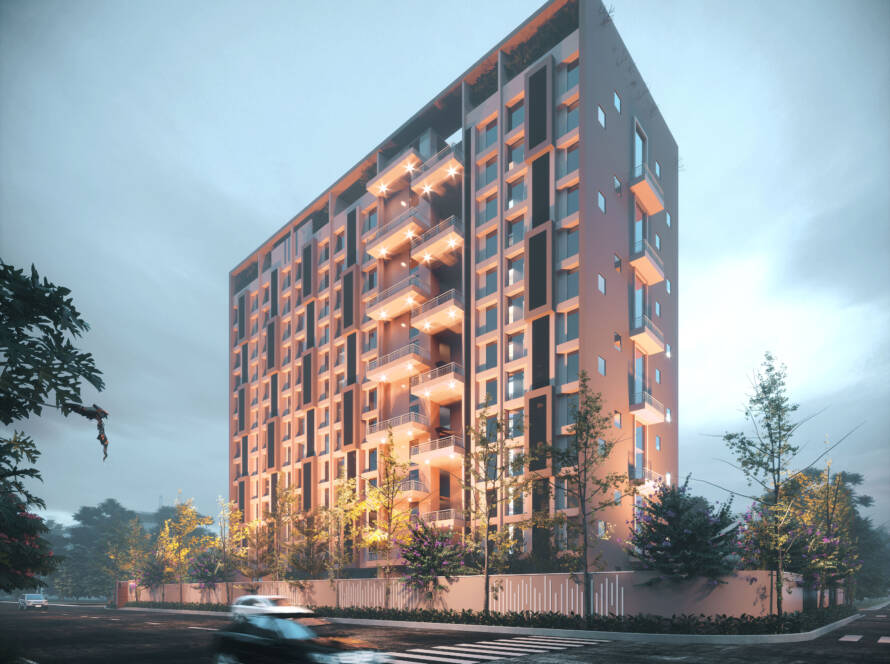In the dynamic realm of architecture, the advent of 3D rendering, commonly referred to as architectural visualization, has ushered in a revolutionary shift. This technology has significantly influenced the manner in which architects conceive, showcase, and articulate their concepts. Within this article, we will delve into the far-reaching impacts of 3D rendering on the architectural industry, with a focus on pivotal elements such as design communication, client interaction, and the overarching expansion of business. Throughout this exploration, we’ll consider the transformative role of 3D rendering, particularly in the context of firms like Arc Studio.
How 3D Rendering Transforms the Architecture Business

Architectural Visualization: A Game-Changer in Design Transformation
Previously, architects presented their design ideas using 2D drawings and actual models. However, the advent of 3D rendering has ushered in a new era. With the ability to create virtual building models, architects can now provide clients with a more immersive and realistic view of their proposed designs. This not only enhances the overall visual appeal but also facilitates a deeper understanding of the architectural concepts.
Client Engagement with 3D Rendering: A Visual Storytelling Approach
One of the remarkable benefits of 3D rendering is its capacity to elevate client engagement. By presenting designs through visually stunning renderings, architects can effectively tell a compelling story about the proposed project. This visual storytelling approach captivates clients, helping them envision the final result and fostering a stronger connection between the architect’s vision and the client’s expectations.
Improved Design Communication: Efficient Iterations for Client Satisfaction
In the realm of architecture, effective communication is paramount. 3D rendering enables architects to communicate their ideas more efficiently. Changes and iterations to the design can be made in real-time, allowing for a collaborative and dynamic design process. This not only saves time but also ensures that the final design aligns closely with the client’s preferences, leading to increased satisfaction.
Time-Saving Architectural Renderings: Streamlining Workflows
Time is a valuable commodity in the architecture business. Traditional design methods often involve time-consuming processes, including creating physical models and revising 2D drawings. With 3D rendering, architects can streamline their workflows, significantly reducing the time spent on manual tasks. This efficiency not only benefits architects but also allows projects to progress more swiftly, meeting deadlines with greater ease.
Cost-Effective Presentations: Technology’s Role in Architectural Marketing
The incorporation of 3D renderings in architectural presentations brings about cost-effective advantages. Unlike physical models that may incur substantial production costs, digital renderings can be easily shared and distributed. This not only saves on material expenses but also opens up new possibilities for marketing architecture through digital channels.
Competitive Advantage in Architecture: Staying Ahead of Trends
In a competitive industry, staying ahead of the curve is essential. Architects who embrace 3D rendering gain a competitive advantage. The ability to present visually stunning and immersive designs sets architects apart, making them more appealing to clients seeking a modern and innovative approach to architectural projects.
Architectural Rendering Services: A Catalyst for Business Growth
The demand for high-quality architectural rendering services is on the rise. Architectural firms that offer these services position themselves as leaders in the industry. Clients are increasingly seeking professionals who can not only design exceptional structures but also present these designs in a visually appealing and realistic manner.
Virtual Reality in Architectural Design: Embracing Technological Advancements
Beyond static renderings, virtual reality (VR) has emerged as a cutting-edge tool in architectural design. Architects can now create virtual environments, allowing clients to experience and explore spaces before they are built. This immersive experience not only enhances client engagement but also provides architects with valuable insights into the functionality and aesthetics of their designs.
Conclusion: The Future of Architectural Visualization
In conclusion, the integration of 3D rendering in the architecture business marks a significant shift in how architects approach design, communication, and client engagement. This technology not only streamlines workflows and saves time but also opens up new avenues for creative expression and business growth. As the architectural industry continues to embrace technological advancements, the future undoubtedly holds even more exciting possibilities for 3D rendering and its transformative impact on architecture.



